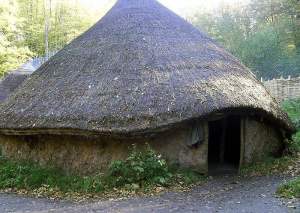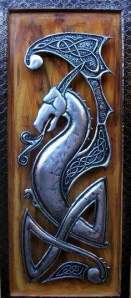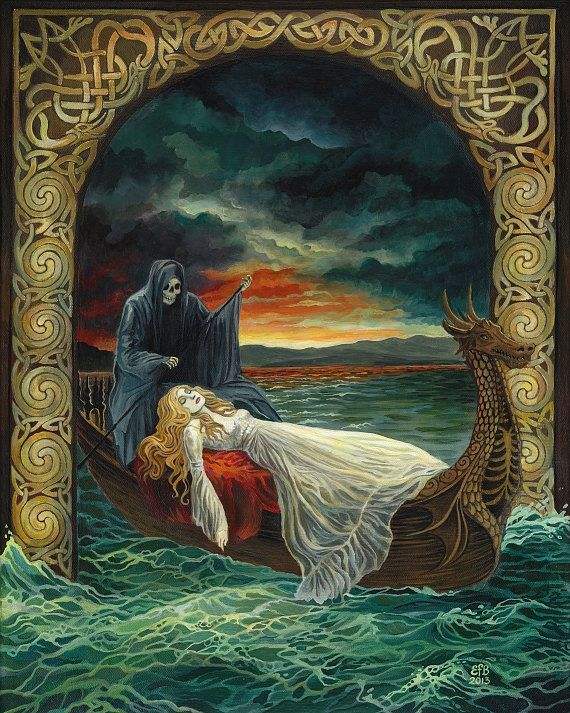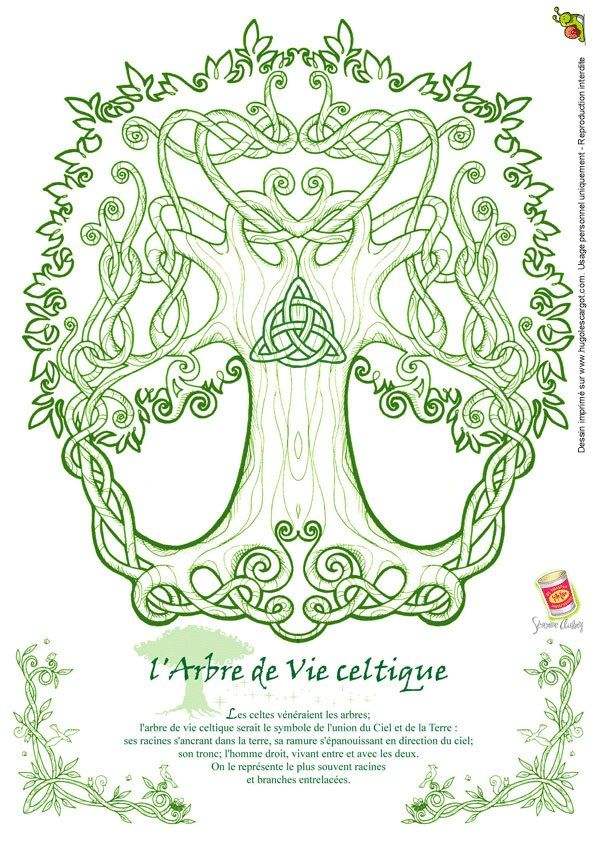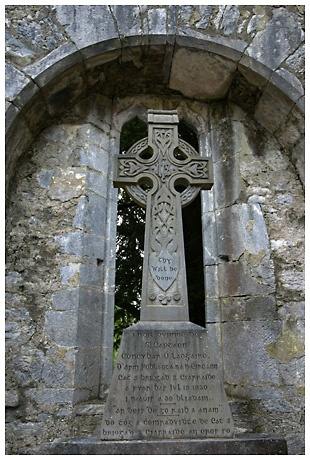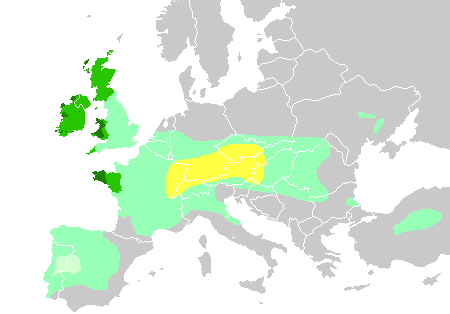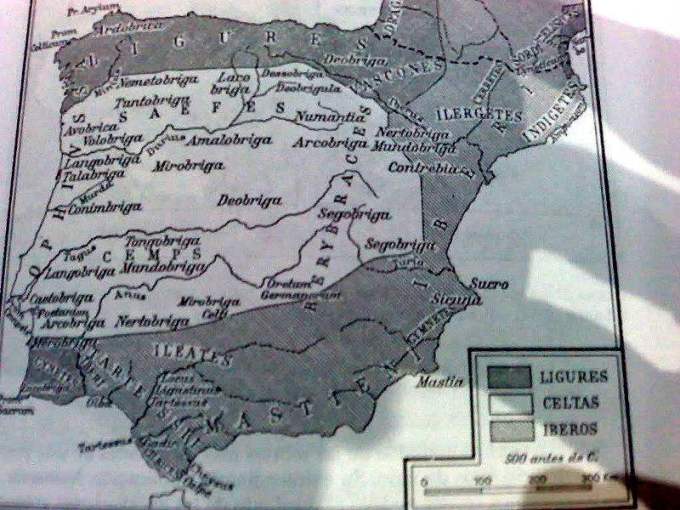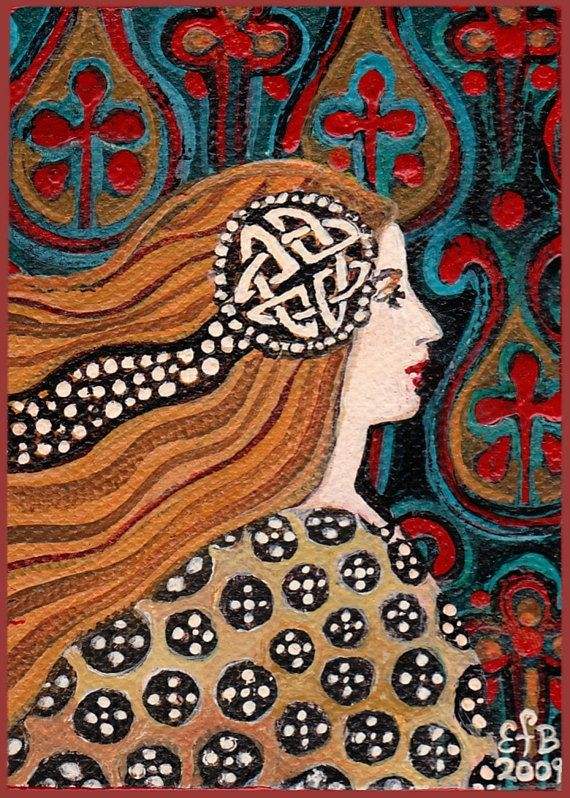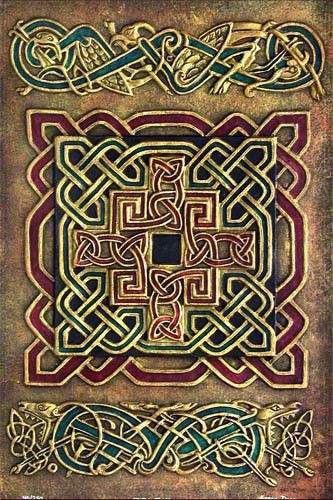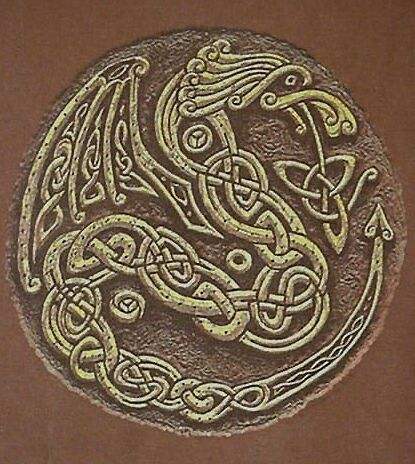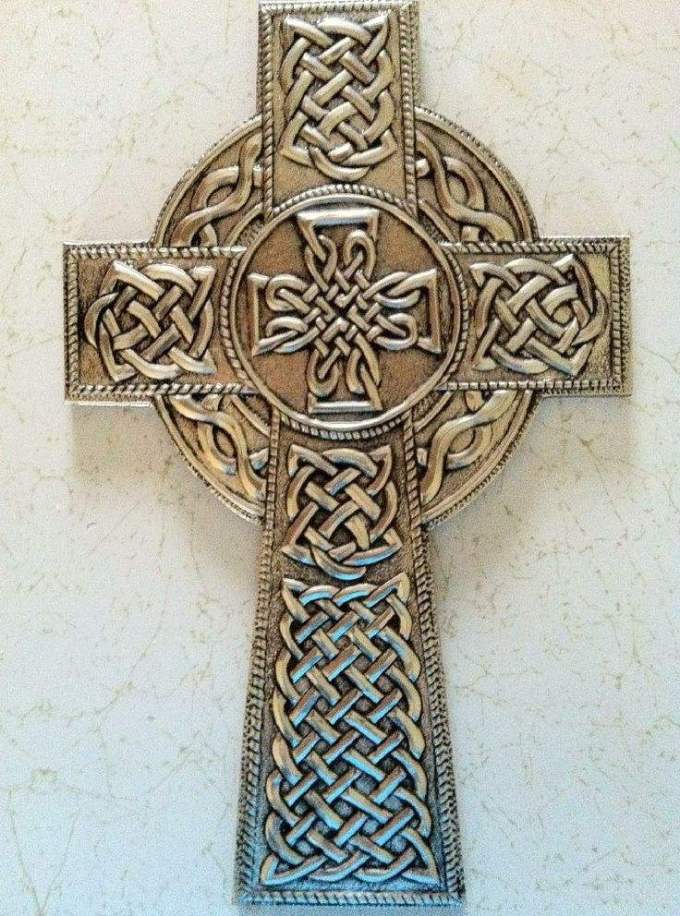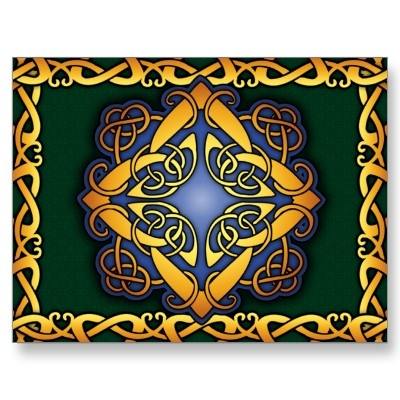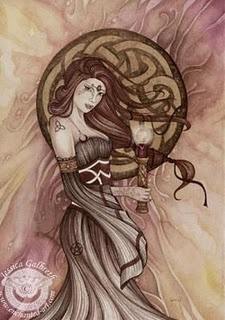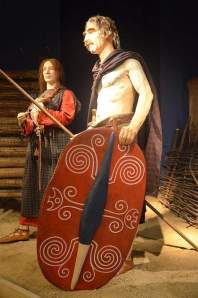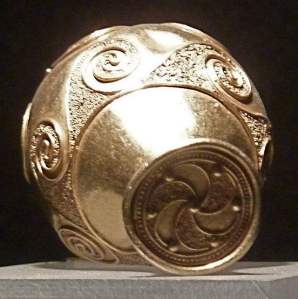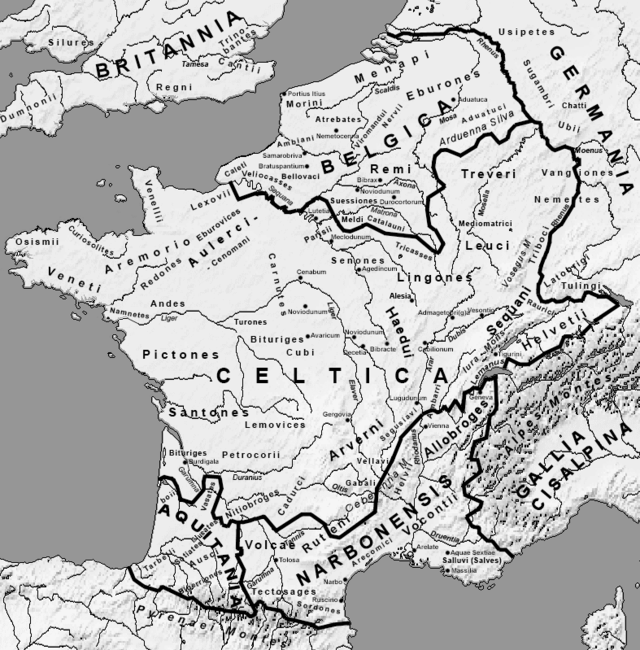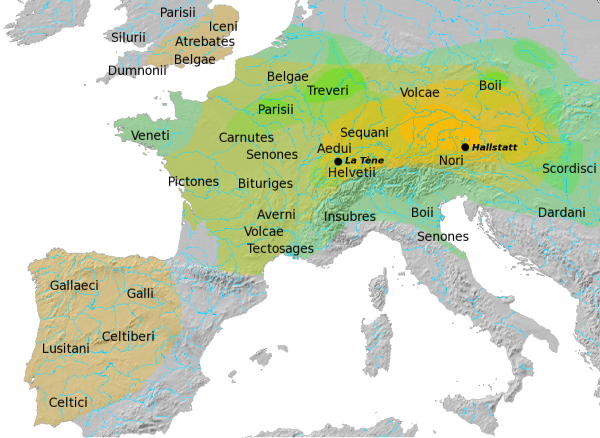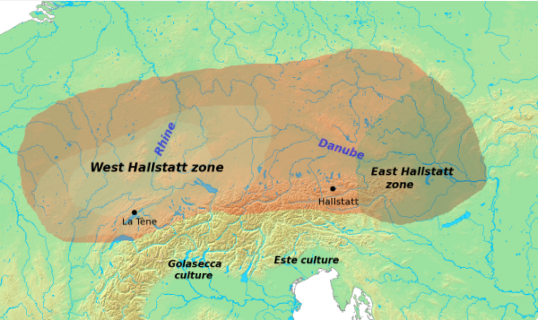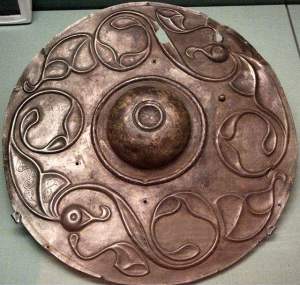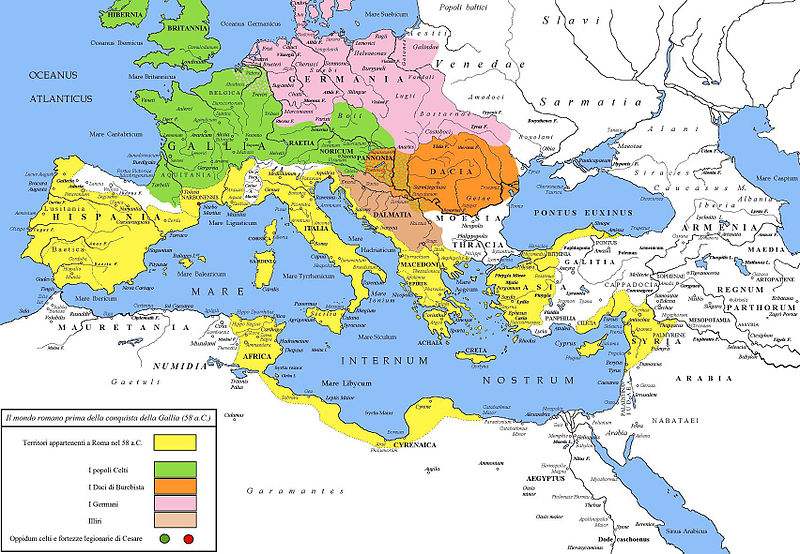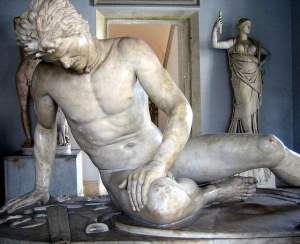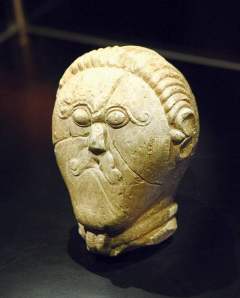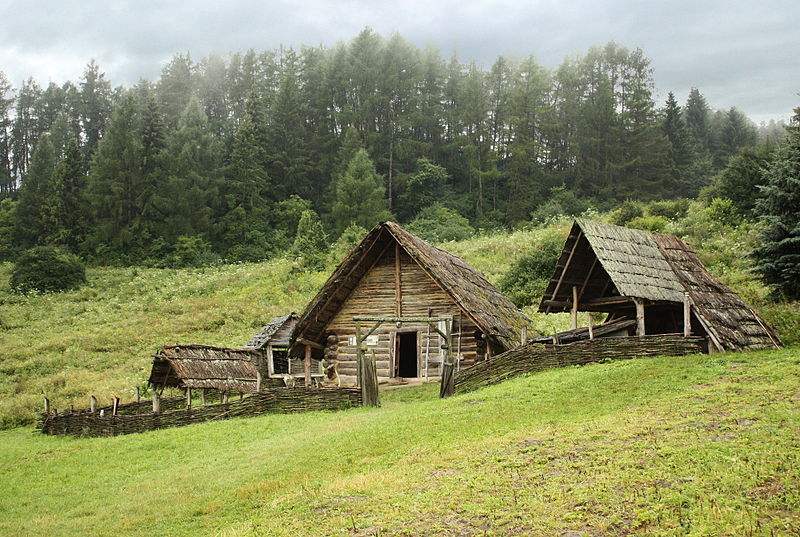_____________________CELTA__________________________
Celtas (del griego, Κέλτoι keltoi) es el término utilizado por lingüistas e historiadores para describir, en un sentido amplio, al pueblo o conjunto de pueblos de la Edad de Hierro que hablaban lenguas celtas, una de las ramas de las lenguas indoeuropeas.1 En este sentido, el término no es por lo tanto étnico ni arqueológico, pues muchos de los pueblos que hablaron lenguas célticas, caso de los Goidelos de Irlanda, nunca llegaron a participar de las corrientes culturales materiales de Hallstatto La Tène.2
Existe sin embargo un concepto más restringido del término, referido en este caso a los llamados celtas históricos, entendidos estos tradicionalmente como el grupo de sociedades tribales de Europa, que compartieron una cultura material iniciada en la primera edad de hierro (1200 – 400 a. C.) en torno a los Alpes (periodo Hallstatt) y más tarde en el hierro tardío (periodo La Tène), y que fueron así llamados por los geógrafos griegos y latinos. En este grupo se adscriben los celtas continentales de la Galia, norte de Italia, Alemania y Bohemia, losceltíberos de Iberia, los gálatas de Anatolia, este y centro de Rumanía y ya con mayores reticencias por los historiadores británicos e irlandeses los celtas insulares.
En tiempos antiguos los celtas que llegaron a lo largo del primer milenio, hacia el 1200 a. C. en Europa y según el punto de vista tradicional, hacia el 900 aC en la Península Ibérica, eran un cierto número de pueblos interrelacionados entre ellos que habitaban enEuropa Central; todos estos pueblos hablaban lenguas indoeuropeasindicativo de un origen común. Hoy, el término “Celta” se utiliza a menudo para describir a la gente, las culturas y lenguas de muchos grupos étnicos de las islas Británicas, Francia en la región de Bretaña,España, en Galicia y Asturias, y Portugal en la región de Minho. Sin embargo tribus o naciones, como los atrébates, Menapii, y Parisii, desde regiones celtas de tierra firme, incluyendo la Galia y Bélgica, se sabe que se movieron hacia Gran Bretaña e Irlanda y contribuyendo al crecimiento de aquellas poblaciones. El uso del término celta para referirse a gente de Irlanda y Gran Bretaña surge en el siglo XVIII. Vivían en pueblos amurallados llamados castros.
Los griegos, los llamaron primeramente “hiperbóreos“; después fueron llamados keltoi o gente oculta, que proviene del griego Hecateo del 517 a. C.
No se puede hablar de un Estado propiamente celta, ya que cada zona tenía su líder, y siendo los celtas un pueblo guerrero como eran, siempre había rivalidades entre ellos.
___________________===============………………………………………
Celtic (from Greek , Κέλτoι keltoi ) is the term used by linguists and historians to describe, in a broad sense, the people or group of peoples of the Iron Age who spoke Celtic languages , a branch of the Indo-European languages . 1 In this sense, the term is therefore not by ethnic or archaeological, for many of the people who spoke Celtic languages , if the Goidels of Ireland, never became part of the cultural currents materials Hallstatt or La Tène . 2
However, there is a narrower concept of the term, in this case referred to the so-called historical Celts , understood traditionally as the group of tribal societies in Europe , who shared material culture began in the first Iron Age (1200 – 400 a. C.) around the Alps (period Hallstatt ) and later in the late iron (period La Tène ), and were named for the Greek and Latin geographers. In this group the continental Celts ascribed theGaul , Northern Italy , Germany and Bohemia , the Celts of Iberia, theGalatians of Anatolia , east and center of Romania and now with greater reluctance by the British and Irish historians island Celts.
In ancient times the Celts who arrived throughout the first millennium, around 1200 a. C. in Europe and according to the traditional view, in 900 BC in the Iberian Peninsula , were a number of interrelated peoples inhabiting them Central Europe ; all these people spoke Indo-European languages indicative of a common origin. Today, the term “Celtic” is often used to describe people, cultures and languages of many ethnic groups in the British Isles, France in the region of Brittany , Spain , inGalicia and Asturias , and Portugal in the region of Minho . But tribes or nations, as the Atrebates, Menapii and Parisii from mainland Celtic regions, including Gaul and Belgium , is known to be moved to Great Britain and Ireland and contributing to the growth of populations. The use of the Celtic term for people of Ireland and Britain emerged in the eighteenth century. They lived in walled towns called forts.
The Greeks , the first called “hyper bóreos “; were called after keltoi or hidden people, from the Greek Hecataeus of 517 a. C.
You can not speak of a Celtic state itself, as each area had its leader, and a Celtic warrior people being as they were, there was always rivalry between them.
Fuente:

